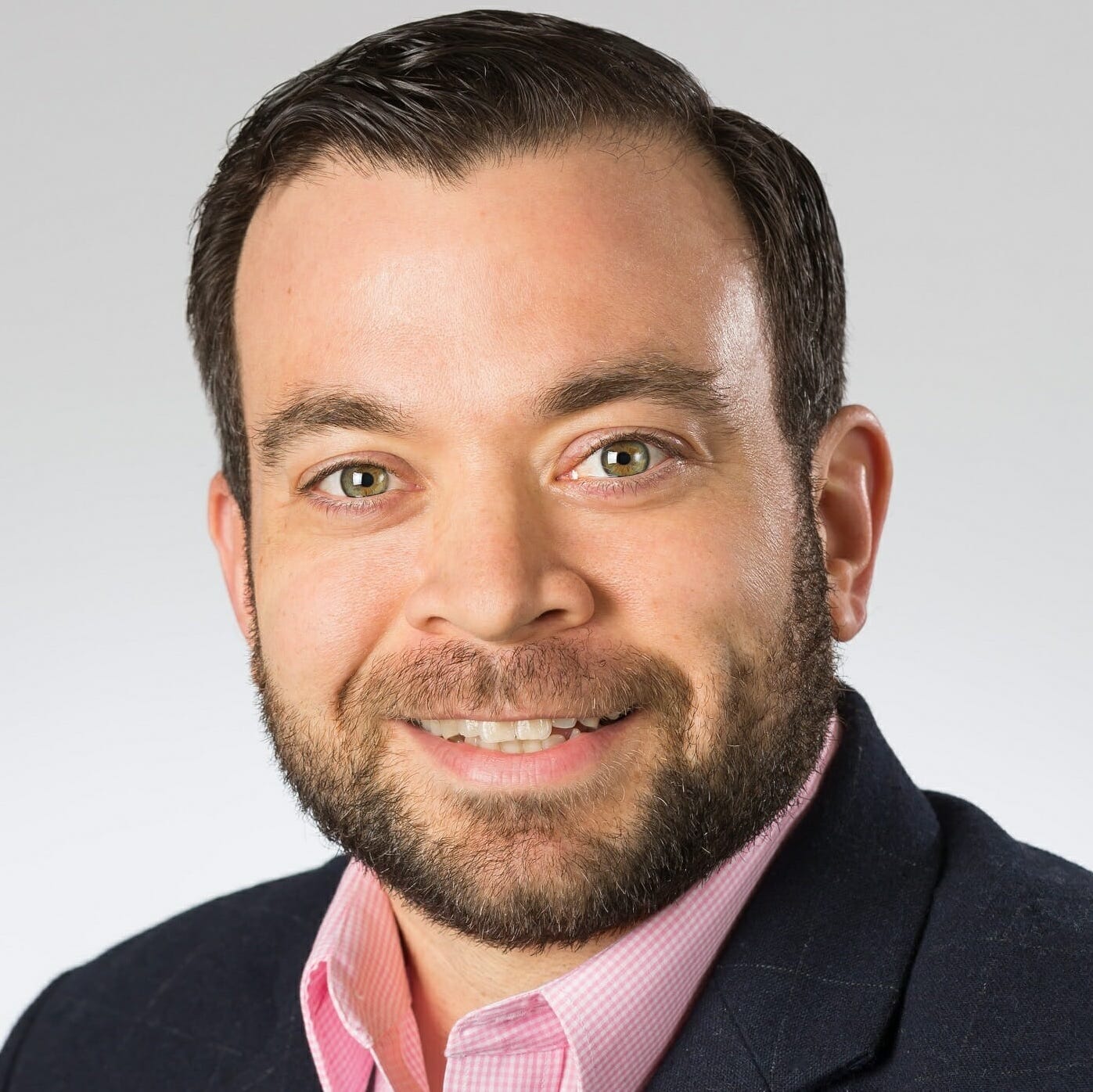Interview
The Road Ahead in 2021
with DHC Members

Predictions on the Road Ahead
- View DHC Member Predictions Below

Linda Ruschau
Chief Client Officer
PatientPoint
“Looking forward” to 2021 is the understatement of the year!
After a year of incredible challenge and adversity, 2021 will be ripe with opportunity to see doctor and patient engagement in a new light and expand the notion of where, when and how we can connect with these audiences. In 2021, we see HCPs prioritizing a more comprehensive, continuum-of-care approach. While in-office will remain the core connection point, HCPs will leverage both in-person and virtual health tactics for consistent patient engagement and connection. This new realm will introduce additional touchpoints for brands to meaningfully engage patients with need-to-know information.
Several enduring challenges will remain in 2021, such as reduced rep access, requiring us to devise new and innovative strategies to reach busy HCPs. Some aspects of Point of Care will continue to evolve, such as the waiting room experience (yes, waiting rooms still exist!), calling for the adoption of impactful creative and technology to drive maximum patient engagement. We’ll see increased emphasis on delivering critical education and treatment information to patients and HCPs in multiple ways, such as touch, QR code and, eventually, voice. And, most importantly, we will continue to work together as an industry in 2021 to drive more equitable outcomes for all through rich content emphasizing doctor-patient discussion on social determinants of health and health equity. On behalf of all of us at PatientPoint, wishing you a 2021 filled with innovation, health and happiness!”

Dan Gandor
Director, Us Customer Experience, Oncology & Virology
Abbvie
I feel like the marketer of the future, a successful marketer of the future, is no different than a successful marketer of the past, someone with a fervent dedication to the customer. The more you understand your customer, the more you focus and deliver what they need, not what you need as a pharma company or what your brand wants or needs but really what they need, what they want. That’s going to be a recipe for success.
Now, we need to realize there’s plenty of marketers who grew up in the pharma ivory tower or grew up in the sales vertical, and therefore, they think they have a customer centricity, but they really don’t. Yes, you have to have the fundamentals and the technical skills, which are more digital than ever before and more integrated than ever before, but the other element that’s going
to be needed for successful pharma marketers is having that customer centric focus and the ability to do that orchestration or facilitation across the different functions.”
*Response was originally provided during a panel at the November DHC Virtual Summit, to the question “What can marketers do today to put themselves on the trajectory to be that ultimate marketer of the future?”

Miriam Paramore
President
OptimizeRx
Looking forward to 2021, what accelerations may surprise us?
There are many things driving the demand for better healthcare. Accessing healthcare is confusing, frustrating and expensive for all of us. Paying for it can bankrupt any one of us. And in 2021, the U.S. government will begin in earnest the conversation about whether healthcare is a universal right in our society.
As our healthcare system continues to evolve, digital health will remain front and center. However, for the idea of “digital health” to have any true value, there’s a critical need for clear, reliable information with which to navigate this complex system. The healthcare system has no lack of data, but rather a lack of meaningful information extracted from that data. We must work to enable the accurate and timely flow of data among and between healthcare stakeholders that will yield actionable insights for the entire healthcare industry.
In 2021 the drivers of interoperability regulations from HHS, consumerism, and value-based care, will accelerate the need for data liquidity – the free flow of information (derived from appropriately shared data) between and among stakeholders. As health IT and digital health vendors come on board, the volume of liquid data will increase, analytics will improve, and the harvesting of valuable information will become easier. Finally, the real-time distribution of this actionable information will accelerate based on these underlying improvements.

Mark Pappas
SVP, Innovation
CMI/Compas
In general the biggest surprises in 2020 have been seeing how fast these technologies have been adapted and continue to evolve and how brands are working to leverage them to be where the patient is now.
Of these, the rise in on-demand healthcare services has been the most surprising. While both Uber and Lyft have their own healthcare offerings, more companies are emerging to bring the providers to the patients. MedArrive and Dispatch Health are newer companies using actual physicians to perform procedures at patients’ homes such as vaccine administration.
Streaming audio and connected TV both have experienced unprecedented growth during the pandemic, and this looks to continue well into 2021 with major motion picture studios bringing their new releases to platforms like HBO Max instead of theaters. According to Nielsen, on April 4th alone, Americans watched 27 BILLION minutes of streaming content on TV—or 50,000 YEARS of content in a single day. According to Global Web index, 74% of consumers state that they’re streaming more audio in Covid-19 and plan to continue to do so post-pandemic. Pandora and Spotify have both seen massive upticks in users leveraging streaming audio for improved mental health. Pandora’s Healthcare Soundboard shows 91% of users believe that listening to music contributes to well-being and 89% use music for mental health. Spotify saw an increase over 200% for health-related podcasts.
In January 2020, coming out of CES we were meeting with the first vendors to have ad solutions for telehealth sessions. No brands felt they needed to be there yet. Just two months later, every brand was trying to find a way to leverage telehealth. Telehealth usage has exploded and seems to be staying with us. In 2019 we asked HCPs, via our Media Vitals research, if they use telemedicine services and 20.1% said they currently do. In 2020 we asked HCPs about their telemedicine use, and 71.8% said they started using it much more after/as a result of COVID-19.
To say 2020 up ended things was an understatement. 2021 will tell us if these changes are the new normal or if we will be seeing even more disruption.

Lisa Flaiz
Director, Multi-Channel Marketing, WW Digital Hub Lead
Bristol-Myers Squibb
I think that there’s still this missing piece about connections for patients when they’re in the healthcare system. If there’s something that we could do to help improve that infrastructure so that people can be connected with their loved ones, it would go so far in improving outcomes. Obviously, I’m a big fan of Western medicine, but there’s only so far that pharmaceutical intervention will take someone without that support system. To me, as long as we’re in a situation where we really do have to limit the visitors and things of that nature, then I would like to see how we can play a part in improving those connections and improving the support in general of patients who need interaction.
*Response was originally provided during a panel at the November DHC Virtual Summit, to the question “What’s your outside of the box idea for 2021? What can we can do in addition to the things that we have to get right?”

Clay Romweber
EVP, Chief Growth Officer
BioPharm Communications
2020 was a year of sudden and dramatic change for the way Brands sell and market their products. However, we also learned a great deal about how to communicate with customers in a new and meaningful way. Here are 2 trends, accelerated out of necessity this year, that we expect to continue evolving in 2021 and beyond.
- Digital transformation will continue its acceleration in 2021, even as we emerge from the Covid-19 crisis. We learned a lot about the value of timeliness and relevance of messaging this year as the volume of digital communication (and related clutter) increased dramatically. As a result, we expect to see continued growth in 1:1, personalized communications in 2021. We will employ more dynamic user journeys to align content with customer needs or adoption habits while leveraging tools like triggers to deliver the right message in a timely manner across multiple channels to increase the likelihood of engagement.
- Brands’ use of key opinion leaders (KOLs) was significantly impacted in 2020. In some cases, tactics such as dinner meetings ceased to exist. As part of the aforementioned digital transformation, we are seeing brands with a renewed focus on delivering opinion leader messaging in more innovative ways. With all the increased digital activity in the marketplace, brands are leveraging the credibility and trust associated with KOL campaigns to drive higher levels of engagement across communication channels. This approach will also allow brand marketers to stay more closely connected with their key advisors; which has been critical in this new normal. We expect to see continued innovation in the structure of opinion leader campaigns in 2021. Some of these innovations will include:
- Virtual KOL video recordings
- Digital KOL roundtables
- Interactive and gamified learning modules
- Regionalization of campaigns with local KOLs

Angelo Campano
SVP
OptimizeRx
What Will Change in 2021: Patient choice. As it relates to the patient, there are not many things more personal than health information and medical needs. There does not have to be one single solution for everyone – different regions of the country have very different medical needs. Allowing the patient to choose how to best invest in their own health and medical needs shifts the responsibility from the pharma dollars and Medicare/Medicaid to the individual.
What Will Stay the Same: Leveraging the power of the EHR. Marketers often rely exclusively on one-way communication channels like display advertisement. Recently, understanding the value of delivering a message in the EHR is something that forward-thinking marketers have begun to leverage successfully. Leveraging the EHR as the starting point of a conversation to deeply engage physicians with relevant and meaningful information, while with the most appropriate patient, helps improve loyalty and increase product satisfaction.
My Prediction: Rapid evolution of connected health tools. Healthcare experts continue to assess, reevaluate, and pursue next-gen technology (such as Telehealth) — from how it affects patient engagement to how it affects the entire patient experience — which is not unlike how Tony Stark looked to build and then continued to improve his Iron Man character’s abilities. In life science, connected health tools are rapidly becoming their own larger-than-life character — one that continues to grow with the ever-evolving healthcare landscape.

Ingrid Eberly
VP Brand Marketing
Healthline Media
Whole person health has been top-of-mind for publishers and health marketers for some time now, and we have data that supports the value of managing conditions with both traditional and complementary methods. For people living with chronic conditions, we will see wellness trends on the rise as it relates to the specificity and personalization of a holistic approach for them. Trending topics include interest in nutrition, CBD, and sexual health; For example young women diagnosed with breast cancer who no longer want to deal with lower quality of life from side effects, are in search for support and information about long term positive sexual health. Let’s lean into these consumer demands and continue to meet their evolving health needs.

Jay Appel
Executive Director, Worldwide Digital Marketing Hub
Bristol-Myers Squibb
We’ve talked about the integration of the marketing and sales organizations as long as pharma has existed. I think we’re seeing a lot more gray lines between what is sales and marketing, especially from a tool perspective. What’s the first thing that everybody had to make sure was in place after COVID sent everybody home? Everybody needed to have some sort of remote engagement capability. That started to bring sales and marketing together even more so than ever because capability needed to be stood up. We needed to train sales force. Everybody needed to make sure that there was the right content in place for the field to be able to utilize on these tools.
I think there’s become an even more tightly integrated relationship between these organizations as a result of the last number of months, because there is such a need back and forth between what we call sales and marketing. Because at the end of the day, going back to being customer centric, if a customer wants to have a discussion in the field, then that’s available to them.
We also need to recognize that some customers might want to spend more time getting what they need from more of a self-service experience. Now the key question is how do you tie those two experiences together to create a seamless customer experience. I think about when I go into the doctor and I have to repeat my history with every single doctor every time I go in, so I’m starting a new relationship every time.
Think about what our customers can experience. They can have a relationship with us through our website and some of our third-party partners, have a separate relationship with our sales force, and the two never really come together so you’re almost starting that relationship over with the brand and with the organization every time you come in and out of that ecosystem. Being able to more tightly integrate that experience is going to become more and more important as we see our customers utilizing these tools more frequently.
*Response was originally provided during a panel at the November DHC Virtual Summit, to the question “Do any of you see a change in the relationship between marketing and sales going forward?”

Nathan Lucht
President and CEO
InStep Health
2021 will bring us more of an appreciation for the small things we too often took for granted. It’s going to give us less time at home (by choice!) as we rediscover travel, restaurants, get-togethers with family and friends, and even our work offices. The way we do business with clients and partners will continue to change dramatically. Face-to-face interactions will come back, but slowly and selectively. There will be a greater appreciation for the times that a Zoom meeting will suffice. We will find we pay more attention to our personal health and are willing to use telemedicine to augment office visits. COVID has undoubtedly put a spotlight on vaccinations and their importance, and as a result, adults will be putting a higher priority on getting their other recommended immunizations. 2020 highlighted the critical role of pharmacies as partners in public health; as a result, consumers will rely to a greater extent on their pharmacies and pharmacists for health information and services. People will consume more digital media and buy more consumer products from online retailers. But the concept of “digital fatigue” is real, and it will spur a greater appreciation for the tangible things in life, including traditional health media, products, and distribution methods. 2021 will be a welcomed new beginning with opportunities for human connection and business innovation.

Richelle Horn
SENIOR DIRECTOR, Marketing
wego health
Empathy in Healthcare
2020 was the year that the world took a walk in the shoes of the chronic care patient. As an industry and individually, we navigated health uncertainty, feelings of isolation, and many common frustrations that chronic care patients regularly faced far before COVID-19.
What this means for marketers is that we have a newfound sense of empathy and understanding of the patients we all serve. And in 2021, we predict that empathetic messaging in healthcare marketing will accelerate.
The Year of the Patient Influencer
In 2020, life as we knew it was put on pause. The world turned to social media for information, as a form of escape, and to stay connected. Healthcare queries topped all other searches, and with studio content creation brought to a halt, patient influencers took center stage.
In a recent quarterly landscape survey, WEGO Health learned that 85% of patients are receptive to branded patient influencer marketing. Patients shared that the top considerations in branded campaigns were not the patient influencer’s reach, but their authenticity and transparency.
With more receptive patients, we also see more pharma brands dip their toes into the waters of influencer marketing. We predict this will accelerate, and if done with an emphasis on authenticity, we also anticipate a rise in patient trust as a welcome secondary result.
Spotlight on Science COVID-19 put a spotlight on science and the healthcare industry like never before, and the world got to see the vital work that pharmaceutical companies do.
The industry has an opportunity to harness this momentum, and we predict that they will through making progress in diversity and inclusion, collaboration with patients, and empathetic messaging.
We look forward to what 2021 will bring for our industry!

Jim Anderson
Chief Customer Officer
Aktana
When we get to the other side of this pandemic, I wouldn’t be shocked to see reps and physicians revert back to their pre-COVID approaches, at least to some extent. The visit restrictions imposed by COVID certainly accelerated HCP comfort with remote engagement and non-personal promotion, much in the same way that patients quickly grew accustomed to telehealth. You can always count on the necessity to drive change.
But when COVID goes away, choice comes back. For many physicians, personalized, face-to-face interaction with a trusted rep is still their preferred way to stay informed about new treatment options and engage with brands. That said, others will certainly opt for the convenience and flexibility of virtual visits. The “new normal” will be a hybrid model of in-person and digital engagement that’s largely guided by individual HCP preference, so commercial teams will need to have the right tools and processes in place to identify the ideal promotional mix and coordinate effective customer journeys.
In particular, I think AI will play an increasingly important role in optimizing every HCP experience—from predicting the next best piece of content to ensuring every interaction considers the full context of previous touchpoints across all channels. As the commercial model continues to become more dynamic and complex, AI that makes data actionable in real-time and maximizes the judicious use of resources will become mission-critical for life sciences teams.

R.J. Lewis
Founder, President & CEO
eHealthcare Solutions
An exerpt: R.J. Lewis’s comments can be read in their entirety on Pharma Marketing News here
I anticipate we will see some sizable layoffs in pharma salesforces once Biden is sworn in and Trump is out of the spotlight. It’s harder to justify a Zoom-force in a world with even more limited access to call on physicians. Office space, barely used at all in the past nine months, will have to find a new equilibrium. Some roles will remain remote post-COVID while others will be hybrid home/office roles. Floor place, required space, office layouts, will all change, but office space use in aggregate should decrease.
We expect to see continued increases in digital ad spending, remote work and a robust explosion of innovative tools for engaging, collaborating and monitoring remote teams. Old school tools, such as the phone, will increase as an alternative to Zoom. We expect the insourcing of some marketing functions by pharma will also increase. And unfortunately, at least initially, COVID cases will increase before subsiding and hopefully go away entirely.



